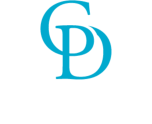Intra-Oral Camera Benefits
The intra-oral camera makes going to the dentist easier for both the patient and the dental health provider. Offices that use intra-oral cameras allow patients to be more interactive in the exam process, which provides patients with a greater sense of understanding and responsibility about personal dental health. Although a traditional visual inspection of the teeth may have sufficed in the past, technology has made it possible for dentists and patients to reap many more benefits from each health exam.
Early Detection of Dental Health Problems
The intra-oral camera enlarges the inside of the teeth to more than 40 times their actual size on a full color screen display.

By zooming in on problem areas in affecting the teeth, dentists are capable of seeing much more than they could with the human eye alone. Often, dentists find the beginnings of periodontal disease or tooth decay that would have otherwise gone undetected if examined without the intra-oral camera.
Patient-Doctor Interaction
The intra-oral camera is not just a diagnostic tool, but it also serves as an educational one too. In the past, dentists have struggled to explain dental decay and other health problems to patients. Most people cannot see well into their own mouths, which leaves dentists to drawing diagrams or using props to attempt to explain what is going on in the mouth of their patients.
With the intra-oral camera, however, the patient sees exactly what the dentist sees on an in-office screen. If necessary, the dentist can pause on a particular tooth or area of the mouth to point out problems and explain possible treatment options. This also frees the patient to ask questions and become a part of the examination process. When dentists can point out specific places on the actual teeth that are decaying, patients may have a better idea of how home hygiene practices and brushing techniques are affecting them.
Better Record Keeping
The intra-oral camera makes record keeping a breeze. Because the camera can take pictures of decay or the beginnings of oral health conditions, images can be printed and placed into patient files. Previously, dentists merely attempted to write an explanation of problems found during exams. Now, dentists can accurately track the progress of treatments or problems for years following a visit. Furthermore, patients can receive printed pictures of the conditions the dentist finds, which may be beneficial for filing insurance claims.
About the Intra-Oral Camera
The intra-oral camera is very small and approximately the size of a pen. Because of its small size, the camera can reveal images of the teeth from angles previously unseen. All exams using the intra-oral camera are completely sanitary, as a different disposable camera cover is used on each patient every time. Images from the intra-oral camera may be digitally stored, printed or disposed of following an exam.

